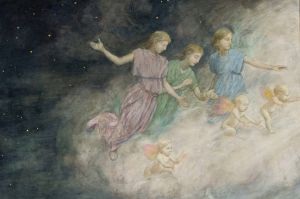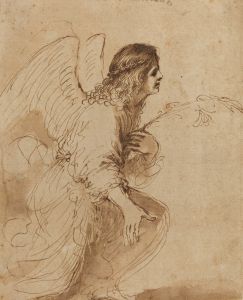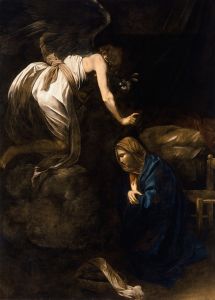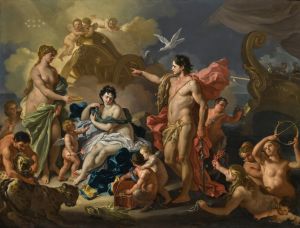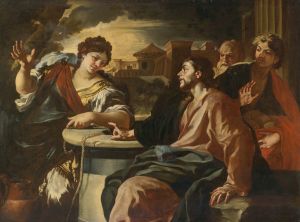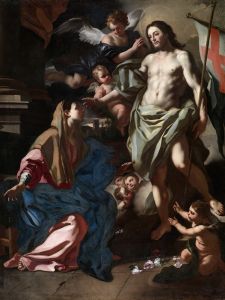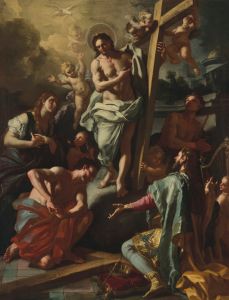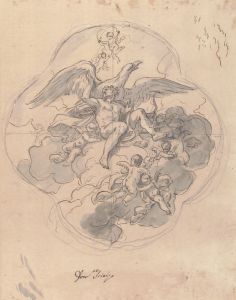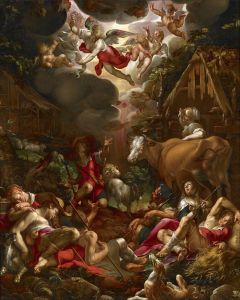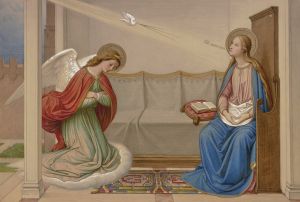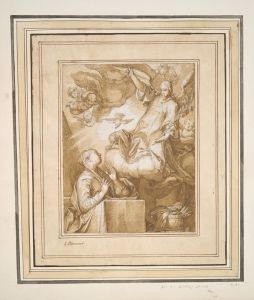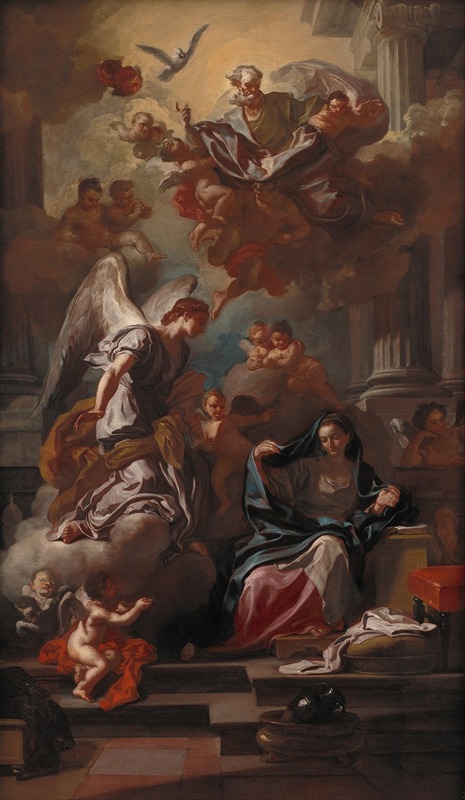
The Annunciation
A hand-painted replica of Francesco Solimena’s masterpiece The Annunciation, meticulously crafted by professional artists to capture the true essence of the original. Each piece is created with museum-quality canvas and rare mineral pigments, carefully painted by experienced artists with delicate brushstrokes and rich, layered colors to perfectly recreate the texture of the original artwork. Unlike machine-printed reproductions, this hand-painted version brings the painting to life, infused with the artist’s emotions and skill in every stroke. Whether for personal collection or home decoration, it instantly elevates the artistic atmosphere of any space.
Francesco Solimena, an eminent Italian painter of the late Baroque period, created "The Annunciation," a work that exemplifies his mastery in combining dramatic intensity with intricate detail. Born in 1657 in Canale di Serino, near Avellino, Solimena was a prolific artist whose works were highly sought after in both religious and secular contexts. He was heavily influenced by the grandiosity of the Baroque style, which is evident in his dynamic compositions and the emotional depth of his figures.
"The Annunciation" is a depiction of the biblical event where the Archangel Gabriel announces to the Virgin Mary that she will conceive the Son of God, Jesus Christ. This theme has been a popular subject in Christian art, allowing artists to explore the divine interaction between the celestial and the earthly realms. Solimena's rendition of this scene is notable for its vivid use of color, dramatic lighting, and the expressive gestures of the figures involved.
In Solimena's painting, the Archangel Gabriel is typically portrayed with a sense of grace and authority, often depicted with wings and a flowing robe, emphasizing his divine origin. The Virgin Mary is usually shown in a posture of humility and acceptance, capturing the moment of her assent to God's will. Solimena's skillful use of chiaroscuro, the contrast between light and dark, enhances the spiritual significance of the scene, drawing the viewer's attention to the central figures and their interaction.
The composition of "The Annunciation" reflects Solimena's ability to create a sense of movement and drama. The figures are often arranged in a way that leads the viewer's eye through the painting, creating a narrative flow that mirrors the unfolding of the biblical story. Solimena's attention to detail is evident in the textures of the fabrics, the delicate features of the figures, and the atmospheric effects that suggest a divine presence.
Solimena's work was highly influential in the development of the Neapolitan Baroque style, and his paintings were admired for their theatricality and emotional resonance. "The Annunciation" is a testament to his ability to convey complex theological themes through the medium of paint, making the divine accessible to the viewer.
Throughout his career, Solimena received numerous commissions from churches and private patrons, which allowed him to refine his style and expand his thematic repertoire. His works can be found in various collections and museums, reflecting his enduring legacy in the art world. "The Annunciation" remains a significant example of his contribution to Baroque art, showcasing his technical prowess and his ability to infuse traditional religious subjects with a sense of immediacy and vitality.
In summary, Francesco Solimena's "The Annunciation" is a masterful representation of a pivotal biblical event, characterized by its dramatic composition, expressive figures, and the artist's adept use of light and color. It stands as a notable example of Solimena's artistic achievements and his influence on the Baroque movement in Italy.





